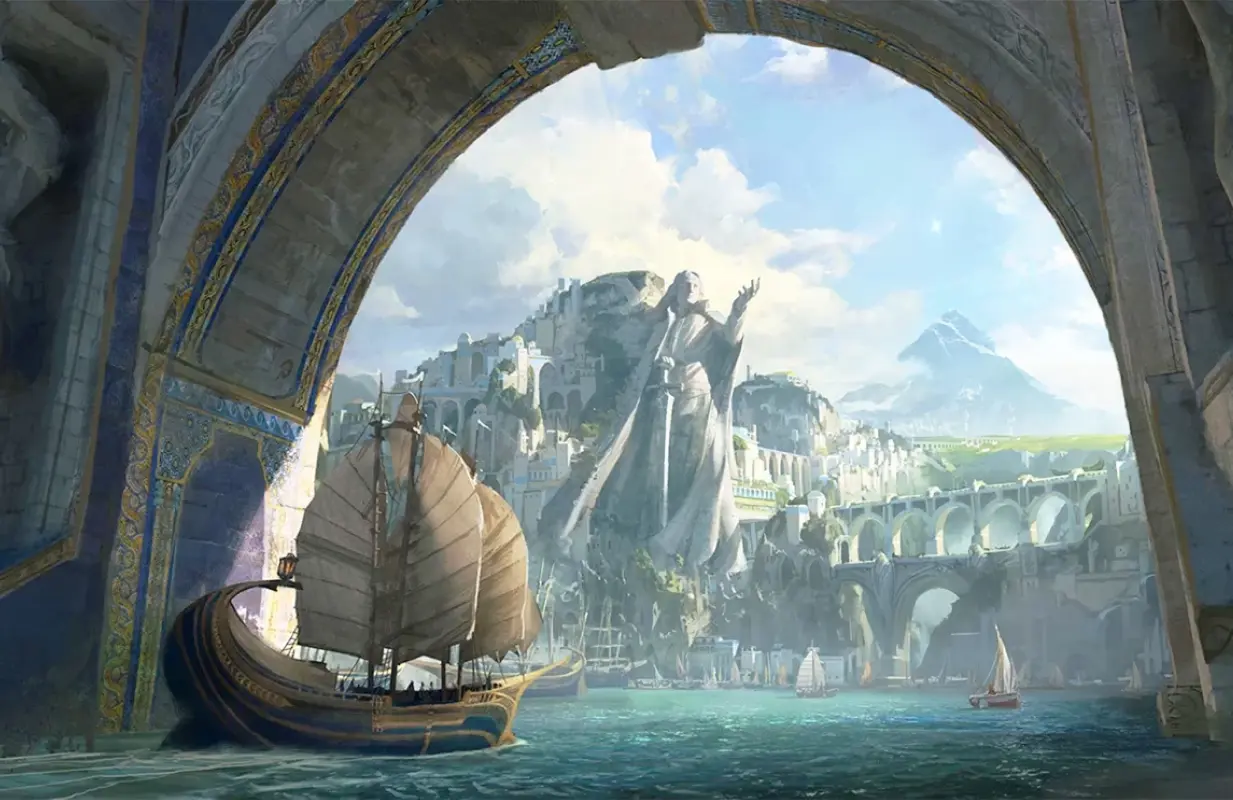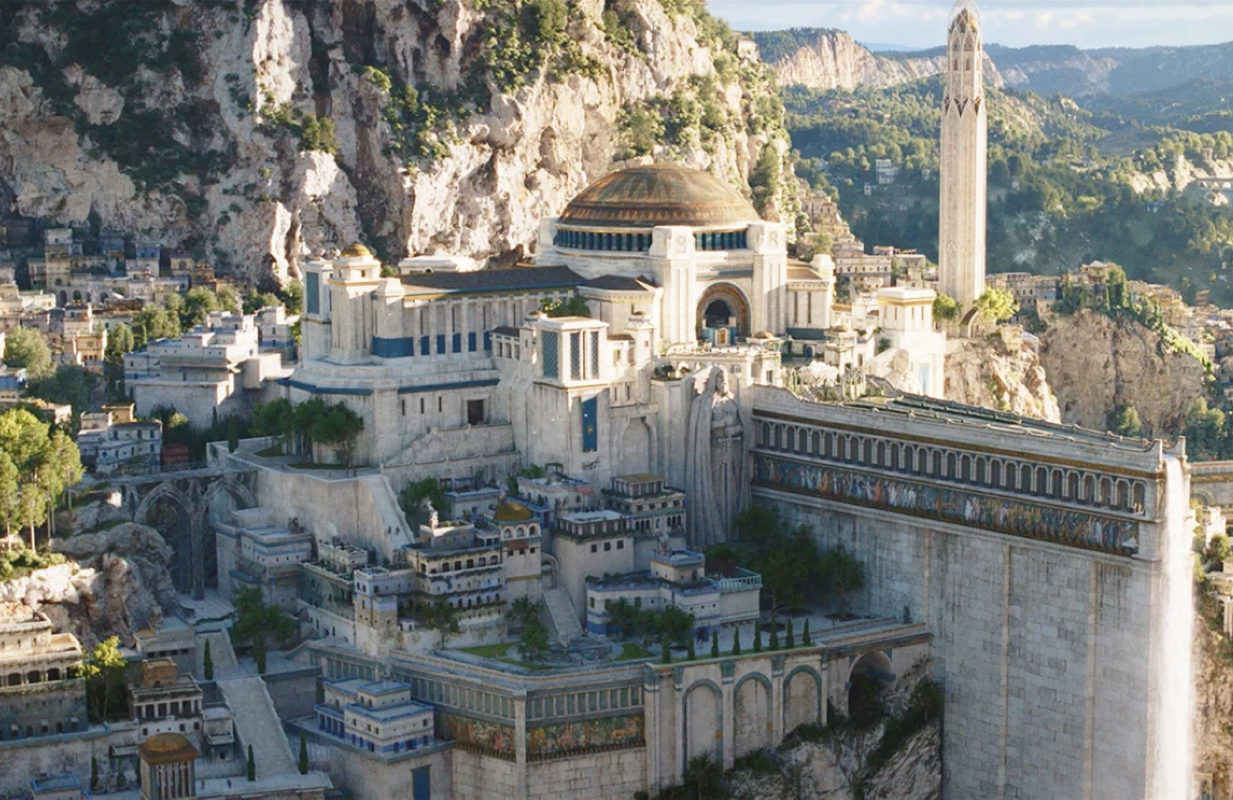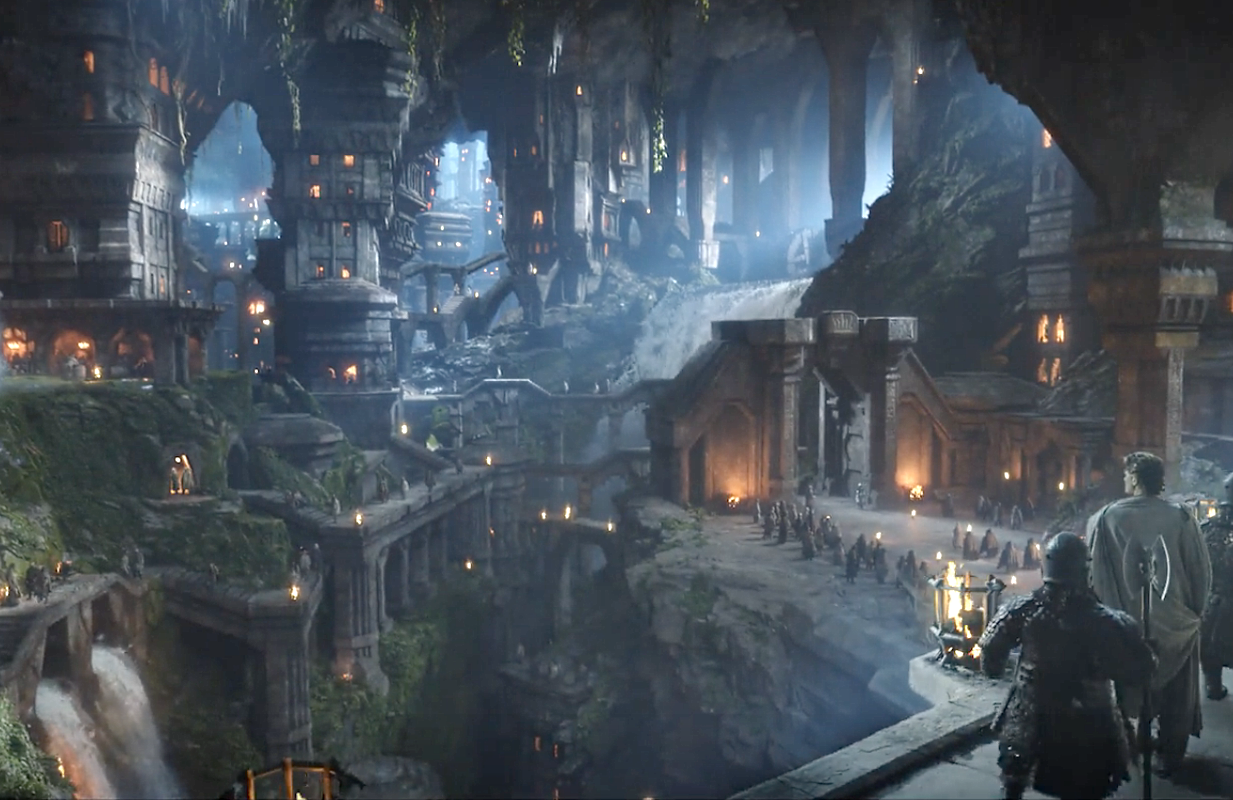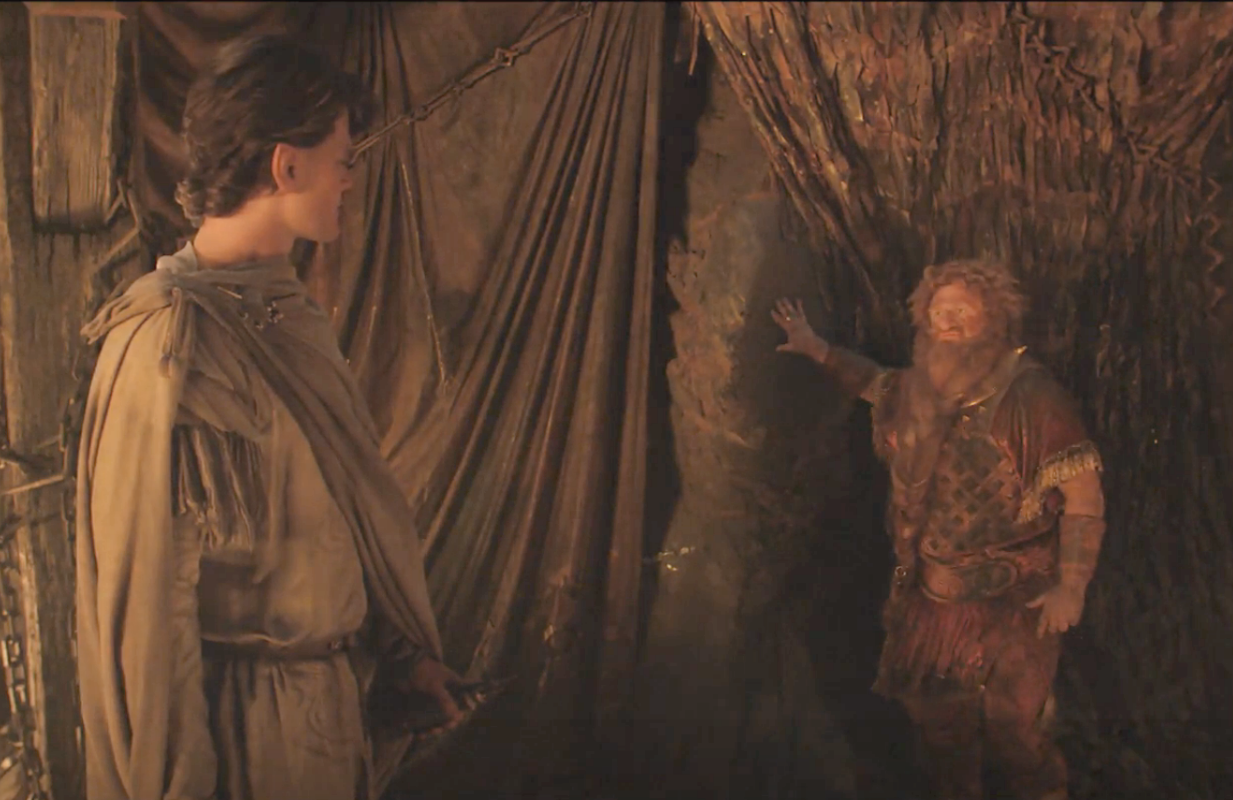How Rings of Power Created a Middle-Earth That’s Both New and Familiar
-
 The Lord of the Rings: Rings of Power marks the first time Tolkien's Atlantis-like island nation Númenor has been depicted on screen. (Photo: Amazon Studios)
The Lord of the Rings: Rings of Power marks the first time Tolkien's Atlantis-like island nation Númenor has been depicted on screen. (Photo: Amazon Studios)Production designer Ramsey Avery has worked on Guardians of the Galaxy Vol. 2 and Star Trek Into Darkness. So you could say he’s worked in space, at least on-screen. But Avery says one of the highlights of his career was getting to build a life-sized ship with 30-foot sails for the new Amazon series The Lord of the Rings: The Rings of Power.
“We built a whole ship, and then we put it on this big six-axis gimbal,” Avery tells Primetimer. “We could move it around. And then we threw water on it, to make it feel like it was going through the waves.” The show also hired actual sailors as extras to pull the rigging of the ship. It was part of a larger set piece, the kingdom of Númenor, that was built on a lot in New Zealand. The set was huge, it spanned four acres.
That’s just an example of the attention to detail, and massive budget, of Rings of Power, which premiered last week on Prime Video. The show takes place thousands of years before the events of J.R.R. Tolkien’s book trilogy The Lord of the Rings. Tolkien wrote a 150-page appendices, which detailed the vast history of Middle Earth.
As the production designer for Rings of Power, Avery was handed the task of imagining what the different civilizations of Middle Earth look like — from the underground Dwarven kingdom of Khazad-dûm, to the Elvish city of Lindon, to the Men-inhabited island nation of Númenor, to the roaming pop-up villages of the harfoots (an ancestor to the hobbits).
To help create the worlds, Avery turned to Tolkien’s writings and his sketches. And he also consulted Peter Jackson’s Lord of the Rings film trilogy. Concept artist John Howe, who worked on the film trilogy, also worked on Rings of Power. The team created over 17,000 pieces of concept art. But they didn’t want to replicate Jackson’s work.
While Lord of the Rings portrayed the decline of the various kingdoms of Elves, Dwarves, and Men, Rings of Power portrays those civilizations in their heyday. This was during the Second Age, before Sauron tricked them into forging the Rings of Power, which he then controlled with the One Ring. It also led to the downfall of numerous civilizations of Middle Earth.
For instance, in his writings, Tolkien described a great Atlantis-like island nation called Númenor, which was inhabited by men who lived for hundreds of years. They were the ancestors of Aragorn from the Lord of the Rings. But Sauron started to poison their minds, and they began to chase immortality (including making human sacrifices). This angered the gods, who sank Númenor. The survivors of Númenor eventually built the city of Gondor.
So in creating Númenor, which has never been depicted on film, Avery consulted the Jackson films — where Gondor was portrayed with white stone buildings and Romanesque domes and columns. Avery used some of those architecture details for Númenor, and ramped it up to eleven. Númenor is more colorful, with blue accents on its buildings and ships — to reflect its connection to the sea.
At the same time, because the Elves helped build Númenor, there’s some Elvish influence there — which in the show was inspired by Gothic architecture and arboreal motifs. Both of those design styles are layered in Númenor. Perhaps only the most Eagle-eyed of Tolkien fans can see it, but Avery says that it’s those details that gives Middle Earth a sense of history.

“In our world, we recognize that over the last 2,000 to 3,000 years, there's been all these rising and falling of cultures and changes of style,” says Avery. “You want to make sure that their world has that sense of activity and change and growth.”
But while Númenor gave Avery some creative freedom, other locations were trickier because they had already been depicted on film. For instance, Khazad-dûm is a dwarven city last seen in The Fellowship of the Ring, where it was a dark wasteland called Moria. It was abandoned after the dwarves woke up the Balrog by mining, as the film says, “too greedily and too deep.” After the fall of Khazad-dûm, the dwarves became a nomadic race.
In Rings of Power, the race of dwarves is thriving in Khazad-dûm. In trying to conceptualize that kingdom, Avery turned to a passage in The Two Towers book where Gimli explains the dwarven concept of mining: “Do you cut down groves of blossoming trees in the springtime for firewood? We would tend these glades of flowering stone, not quarry them.”
To Avery, this means that the Khazad-dûm seen in the films, with the ultra high ceilings and geometric columns, were constructed after the dwarves became greedy, because of the corrupting influence of the Rings of Power.
“The dwarves lost touch with their nature of the stone. And they started making this hugely monumental, very geometric architecture, where they're carving the stone and shaping the stone,” he says. By contrast, in Rings of Power, “the shapes and the architecture have much more of a feeling of being found within the shapes and the veins and the crystal forms of the actual stone, so it's more respectful of the mountain.” In Rings of Power, Khazad-dûm is a lively, airy city and an engineering marvel, with flowing rivers, light shining in from the outside, and vegetation.

Aesthetics aside, there is one more crucial way that the Rings of Power took its lead from the Lord of the Rings films. Instead of having the actors perform in front of a green screen, the creative team built as many practical sets as they could. They even built a working elevator for Khazad-dûm. That meant the actors could actually move through Middle Earth.
And they could act with each other in the same room. When the elf Elrond and the dwarf Durin IV meet in Rings of Power, though the characters are supposed to be vastly different in height, the film crew was able to achieve that through forced perspective and building set pieces on two different scales.
“We had a large scale, which was built for a race that was played by regular-sized humans but they were supposed to be smaller [like dwarves]. And then we had story scale, for a human to handle something that's in a Dwarvish world. So we had to make it smaller for the human and bigger for the dwarves,” explains Avery.

Doing these practical effects instead of relying on CGI was a way to make it easier for the actors to inhabit their roles (and it avoided a situation similar to what happened on The Hobbit films, where Sir Ian McKellen almost quit because he was so miserable acting opposite a green screen instead of an actor).
For Avery, who has been obsessed with the Lord of the Rings books since he was 10 years old, being able to work on Rings of Power has been a dream come true. “Oh my goodness, I get to go play in Middle Earth!” he exclaims. “We wanted to make sure that everybody believed you could actually step into this world.”
The first two episodes of The Lord of the Rings: The Rings of Power are now streaming on Prime Video. New episodes drop Fridays through October.
People are talking about The Lord of the Rings: The Rings of Power in our forums. Join the conversation.
Diep Tran is an arts journalist/editor based in New York City. Follow her on Twitter @DiepThought.
TOPICS: The Lord of the Rings: The Rings of Power, Prime Video, Ramsey Avery, Production Design
- No One At Amazon Seems to Know the Full Story About Studio Spending
- The Rings of Power and Other Big TV Swings Aren't Exactly Paying Off for Amazon
- The Lord of the Rings: The Rings of Power Sets All-Female Directing Team for Season 2
- The Lord of the Rings: The Rings of Power Season 2 — Everything We Know So Far